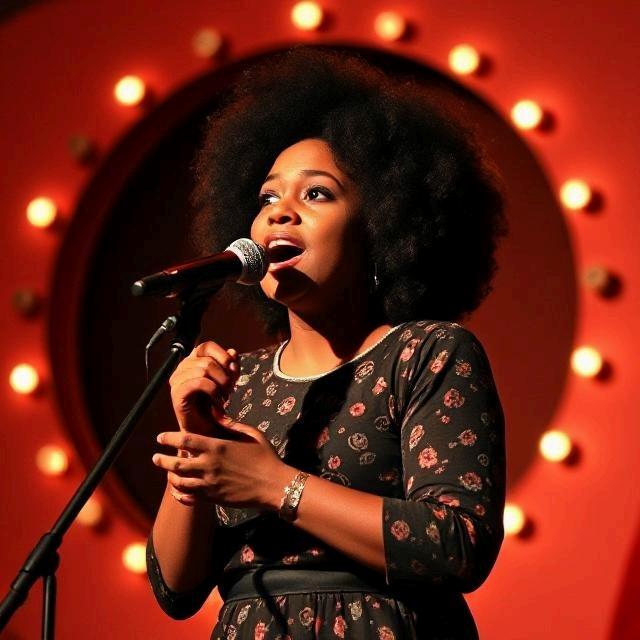
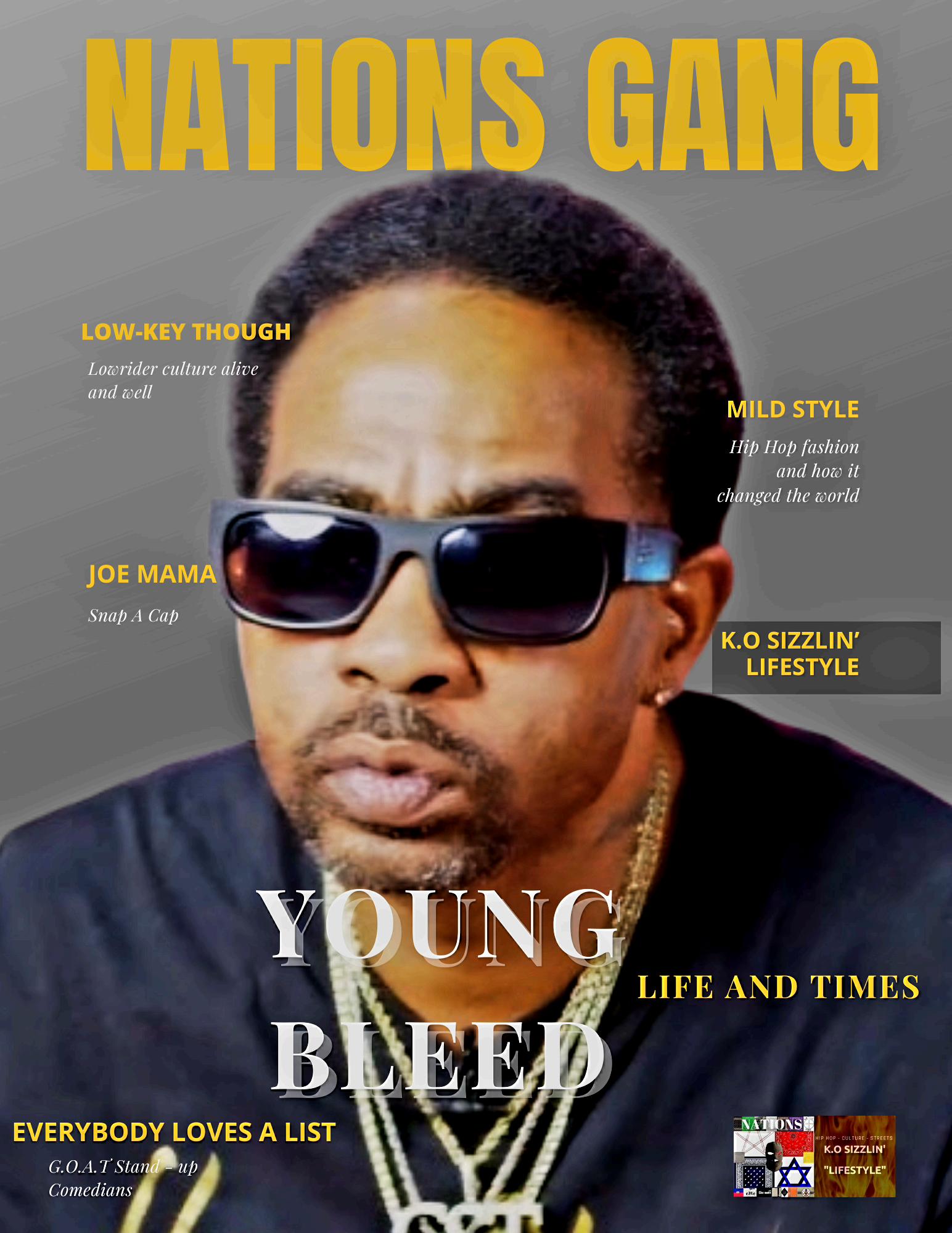



Lowriders and Their Impact on Latino Culture: A Legacy of Art, Identity, and Resilience Since the 1940s, lowriders have served as a potent symbol of Latino culture, blending artistry, innovation, and pride These iconic vehicles, with their signature lowered frames and customized designs, have transcended their origins in the streets of Los Angeles to become a global cultural movement. The history of lowriders is not just about cars but also about community, identity, and the expression of resilience in the face of adversity

Since the 1940s, lowriders have served as a potent symbol of Latino culture, blending artistry, innovation, and pride. These iconic vehicles, with their signature lowered frames and customized designs, have transcended their origins in the streets of Los Angeles to become a global cultural movement. The history of lowriders is not just about cars but also about community, identity, and the expression of resilience in the face of adversity

The Birth of the Lowrider: Roots in Post-War America
The lowrider was born out of the postWorld War II era when Mexican American youths in Southern California began to modify their vehicles Influenced by the burgeoning custom car culture of the time, these young Latinos sought to make their cars stand out. The distinctive low stance, achieved through the installation of hydraulics that allowed the car to be lowered and raised, became a hallmark of this new automotive style

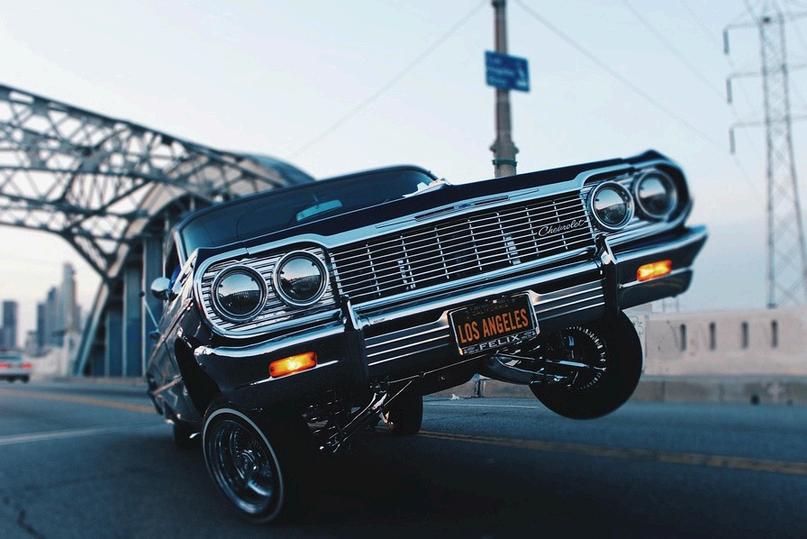
The aesthetic was more than just a technical modification it was a form of self-expression, a way to display individuality and craftsmanship in a society that often marginalized Latino communities. At first, lowriders were seen by mainstream society as a form of rebellion. However, for the Chicano community, the lowrider became a symbol of pride and cultural identity The car was a canvas for personal and communal expression, decorated with intricate murals, elaborate chrome detailing, and custom upholstery Every lowrider told a unique story whether through religious iconography, portraits of family members, or symbols of social and political movements.
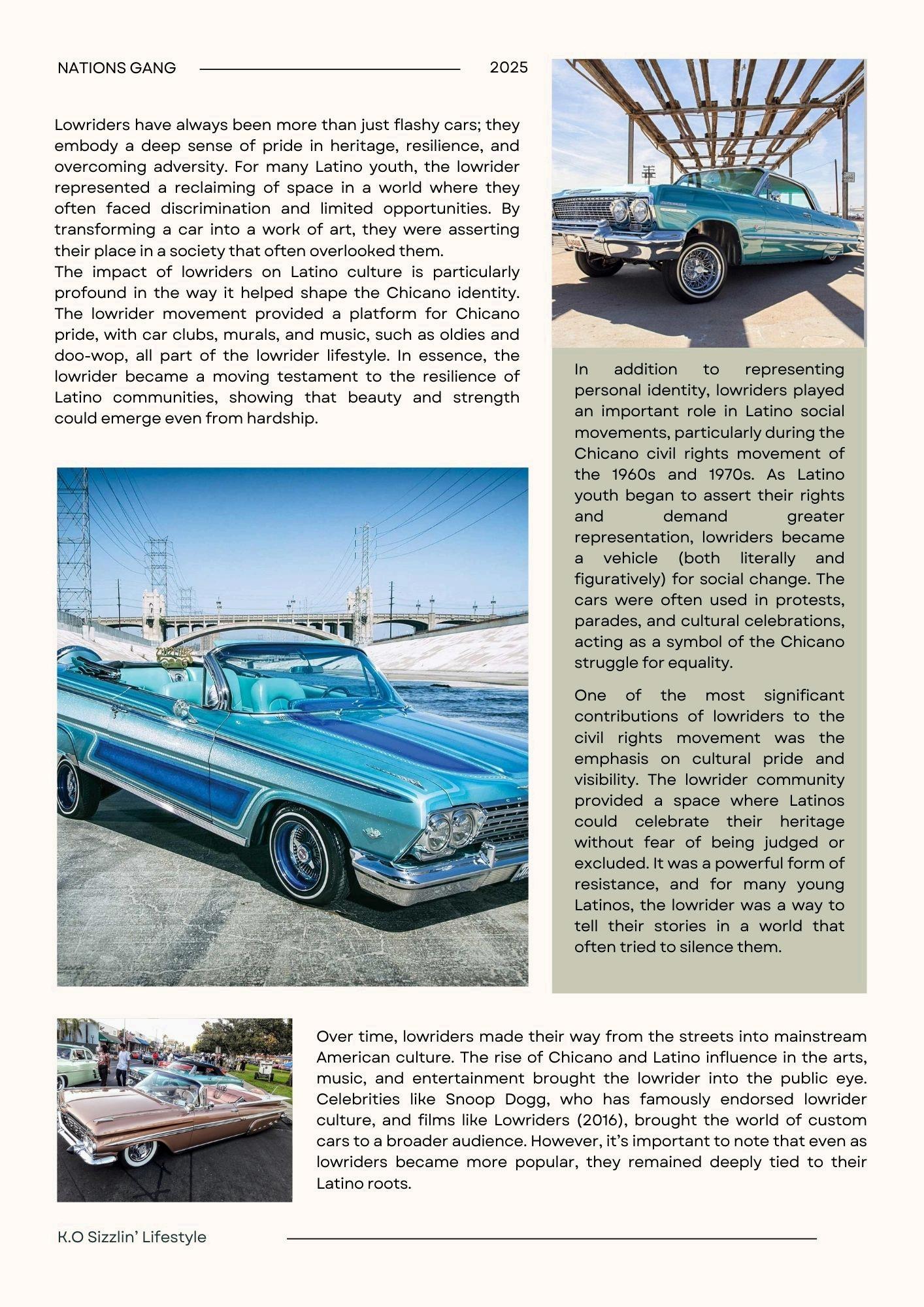
In the 1980s and 1990s, the lowrider culture took on new forms, influenced by hip hop and the growing popularity of cruising culture. While the vehicles continued to represent personal creativity and community, they also became markers of a growing Latino influence in mainstream media Perhaps the most lasting legacy of the lowrider movement is its contribution to the world of art. The intricate detailing of lowrider cars, from their hand-painted murals to the custom upholstery, has elevated the car into a true form of artistic expression. Latino artists began to use lowriders as canvases, creating pieces that referenced their history, mythology, and cultural beliefs Today, many lowriders are displayed in galleries, celebrated for their craftsmanship and cultural significance

artists and car
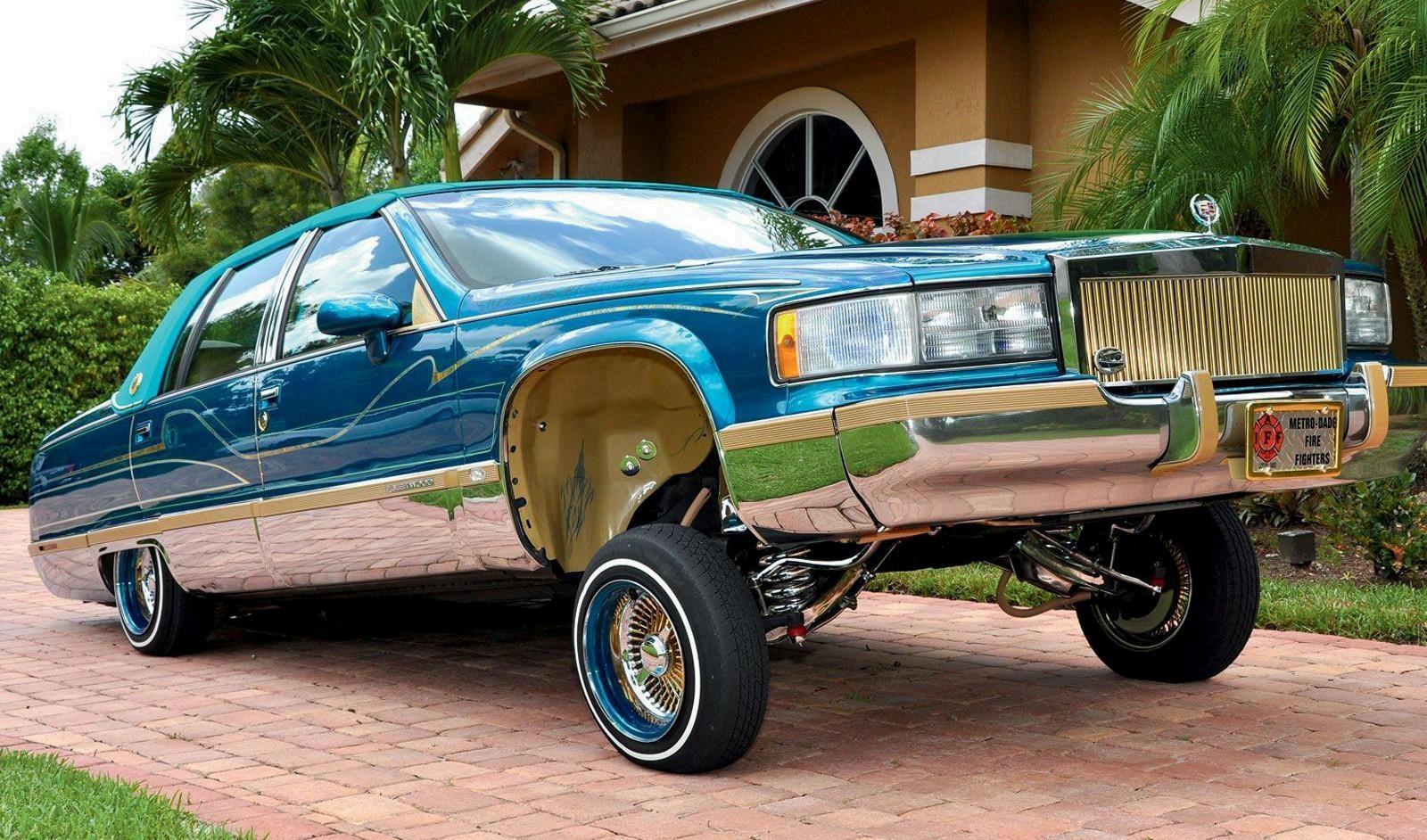
Nationals attract thousands
The lowrider movement has also inspired a new generation of Latino enthusiasts, ensuring that the culture remains vibrant and continues to evolve. Events like the annual Lowrider of people and serve as a showcase for the artistry of the community.
regardless of ethnicity
What started as a local phenomenon in Los Angeles has since spread around the world, with lowrider culture influencing people from all walks of life, or nationality. From Japan to Europe, lowriders have found a home in cities across the globe. The global spread of the lowrider movement underscores its universal appeal its combination of craftsmanship, community, and cultural pride resonates with people everywhere.

K O Sizzlin’ Lifestyle

Lowriders are much more than just cars they are symbols of pride, identity, and resilience. They have transcended their origins to become an integral part of Latino culture, representing the power of self- expression and the strength of community. From their birth in the streets of Los Angeles to their place in mainstream culture, lowriders have proven to be not only a cultural artifact but also a living, evolving testament to the vibrancy of Latino identity In the words of legendary lowrider artist and designer, Ed "Big Daddy" Roth, "Lowriders are about more than just looking good. They're about showing who you are, where you come from, and where you're going." The lowrider continues to be a symbol of innovation, pride, and above all, resilience in the face of challenges As long as there are those who cherish the culture and continue to drive these iconic vehicles, the legacy of lowriders will endure
In the world of hip-hop, the art of delivering a sharp, clever remark often at someone else's expense is as central to the culture as the beats themselves. Whether you call it “snappin’,” “cappin’,” or playing "The Dozens," this tradition of verbal sparring has been a staple of African American culture long before it entered the mainstream of hip-hop. And at the heart of it all? The iconic "Yo Mama" jokes.


The Dozens is a game with deep roots in African American oral traditions. Going back to slavery times, it was a way for individuals to verbally outwit one another, often in an attempt to elevate their own social status or gain respect. Historically, it was seen as a battle of wits where insults were exchanged in a comedic and competitive way, but there were strict unwritten rules: the insults were often not taken personally, and the goal was more about the cleverness of the wordplay rather than genuine malice
As the years passed, the Dozens evolved into a cultural norm for young people in urban neighborhoods It became a way to establish dominance or simply entertain, with a blend of humor, creativity, and insult By the time hip-hop exploded onto the scene in the late '70s and '80s, The Dozens was a natural fit for the freestyle rap battles that dominated the genre

In hip-hop, the verbal insults have different names depending on the region and era. “Snappin’” is the act of throwing fast, witty jabs at someone usually a playful, sometimes vicious display of one-upmanship
cappin’ is one of a powerful tool in opponent freestyles, with and
The culture around snappin’ and constant wordplay, an almost chess-like mentality where one slip-up, one poorly timed response, could leave you looking foolish It’s as much about the delivery the confidence, the timing, and the creative finesse as it is about the insult itself. To "cap" someone is to ridicule them, but it's also to elevate the art of the exchange: the best "cappers" are revered in a similar way to MCs who excel in battle rap. In the world of hip-hop, this form of wordplay isn’t just for comedians or casual friends; it’s the competitive world of rap. Take a battle rap session, for example The whole point is to roast your rhymes, quick-witted barbs that can put them on blast in front of an audience “Yo mama” jokes often appear in these sessions as a way of invoking personal insults, even though the focus is usually on the cleverness of the insult itself
long-standing traditions poke at
One of the most well-known and of verbal sparring in the culture of snappin' and cappin’ is the “Yo Mama” joke Simple, yet deeply effective, these jokes follow a familiar structure poking fun at someone’s mother (or at times their own family) to evoke laughter or a reaction While “Yo Mama” jokes are usually lighthearted and rooted in absurdity like “Yo mama’s so fat, when she skips a meal, the stock market drops” they often push boundaries. What began as playful exchanges between friends evolved into something more, with rival rappers using them as a direct method to dismantle their opponents in battle raps. These jokes may appearances, intelligence, or wealth, but the skill lies in how the jabs are delivered with humor and style.
In hip-hop, invoking “Yo Mama” passage.
Rappers who can deliver the zingers with unmatched energy garner admiration from the crowd and an unmistakable sense of pride in crafting the perfect one-liner, a the excellence sought after in the art of rapping itself. Though many view the culture of snappin’, cappin’, and "The Dozens" as a way of showing a building camaraderie and respect within the community. It’s a form of where only displaying their verbal dexterity but also signaling their ability to survive in a competitive world. street corners where these exchanges now evolved into arenas where the art of the roast is refined to a fine science And in hip-hop, it’s not just about the jokes it’s the jokes is a rite of and panache often their peers. There’s quality that mirrors disrespect, significant it also plays role in social participants bonding, are not The playgrounds and were once held have about the response, comeback, the rhythm of it all
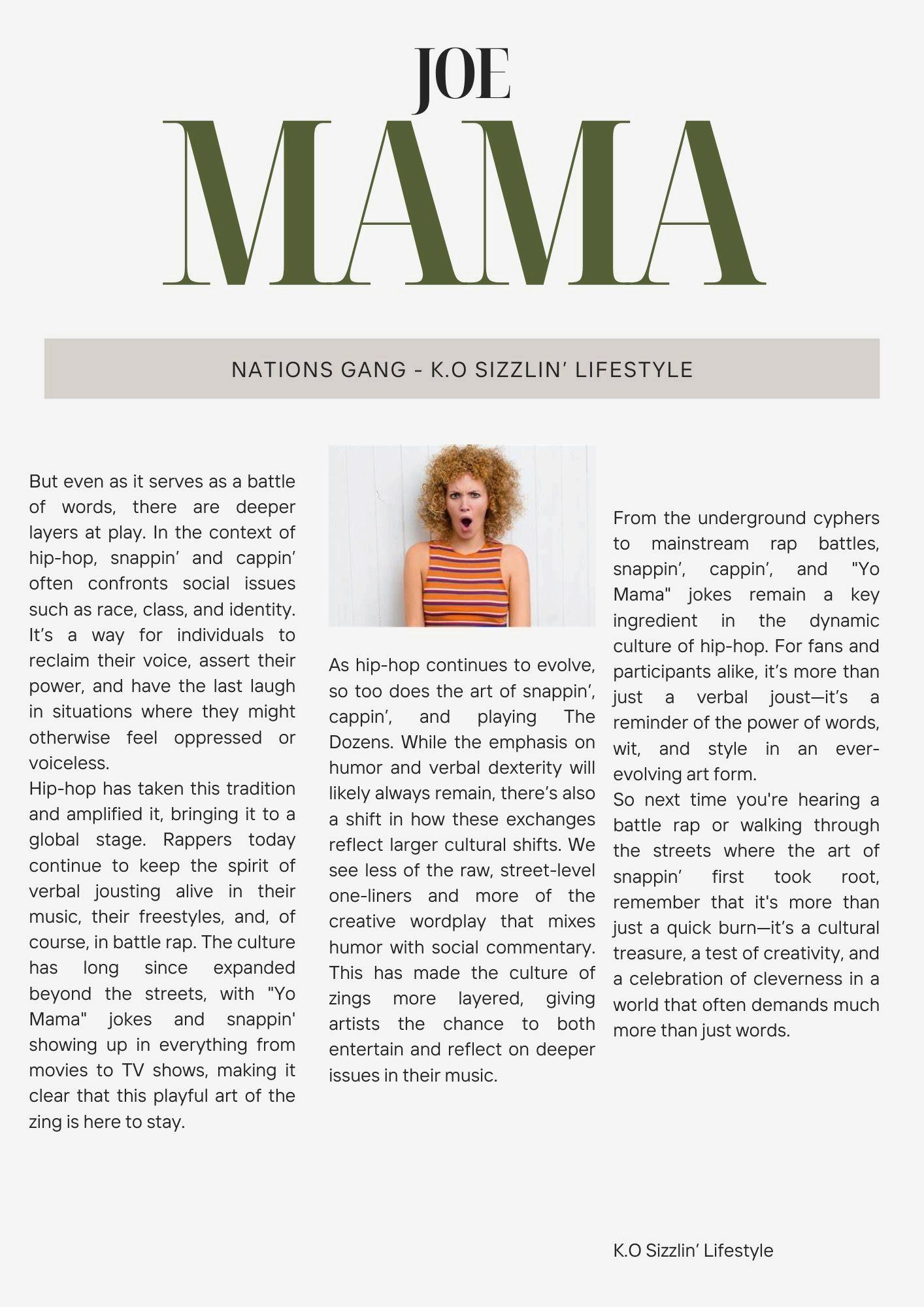
Just because we love comics and it’s always fun to stir the pot of discussion.




K.O Sizzlin’ Lifestyle

1 Richard Pryor 2 Eddie
Murphy 3.Chris Rock
4.George Lopez 5.Mitch
Hedburg 6 Kevin Hart
7.Cedric The Entertainer
K O Sizzlin' Lifestyle Exclusive: Young Bleed Talks Legacy, Hustle, and Hip-Hop's Evolution
By K O Sizzlin' Lifestyle
Introduction
Hip-hop is more than just music it’s a movement, a lifestyle, and for artists like Young Bleed, a lifelong journey Bursting onto the scene in the late '90s with the classic My Balls and My Word, Young Bleed solidified himself as a force in Southern rap. Now, years later, he’s still making moves, proving that real talent and hustle stand the test of time K O Sizzlin’ Lifestyle caught up with the Baton Rouge legend to discuss his roots, the game ’ s evolution, and what’s next for him
The Come-Up: Staying True to the Grind
Young Bleed’s entrance into the rap game was nothing short of iconic With a sound that blended raw street narratives with a cinematic flow, he quickly gained traction, signing with No Limit Records and later expanding his reach independently
When asked about his early inspirations, he reflects on the grind:
“I always had a love for music, growing up listening to everything from blues to funk But when hip-hop came through, it changed the game I saw it as a way out, a way to tell my story and connect with people on a real level.”
Hip-Hop Then vs Now
With decades in the industry, Young Bleed has witnessed firsthand the shifts in hip-hop culture and the music business
From the days of physical mixtapes to the digital streaming era, he’s adapted while staying true to his roots.
“The industry is a whole different beast now, ” he says “Back then, we had to hit the pavement, hustle tapes, and build our name from the ground up Today, everything is online, which makes it easier to reach fans, but at the same time, it’s oversaturated. You gotta find ways to stand out.”
Despite the changing landscape, he believes that authenticity still reigns supreme: “Real recognizes real If you ’ re true to your craft and put in the work, the right people will feel it ” New Music and What’s Next
Young Bleed isn’t slowing down anytime soon. With new projects in the works and collaborations brewing, he remains committed to delivering quality music that resonates with fans
“I got some new heat coming, something for the old fans and the new generation I never stop creating Music is in my blood, and as long as I got a story to tell, I’m gonna keep putting it out ”
When asked about advice for up-and-coming artists, he keeps it simple: “Stay hungry, stay humble, and don’t let nobody tell you what you can’t do ”
Final Thoughts
Young Bleed’s journey through hip-hop is a testament to resilience and passion From his early days in Baton Rouge to his continued influence on the culture, he remains a figure of inspiration for artists and fans alike As he gears up for his next chapter, one thing is clear Young Bleed is here to stay. To listen to the full converstion tap in on Youtube!
https://youtu be/xFZ7jltboss?si=hb1ByTSF7Pf3J1fn
Stay tuned for more updates on Young Bleed’s upcoming projects and exclusive content from K.O Sizzlin’ Lifestyle.

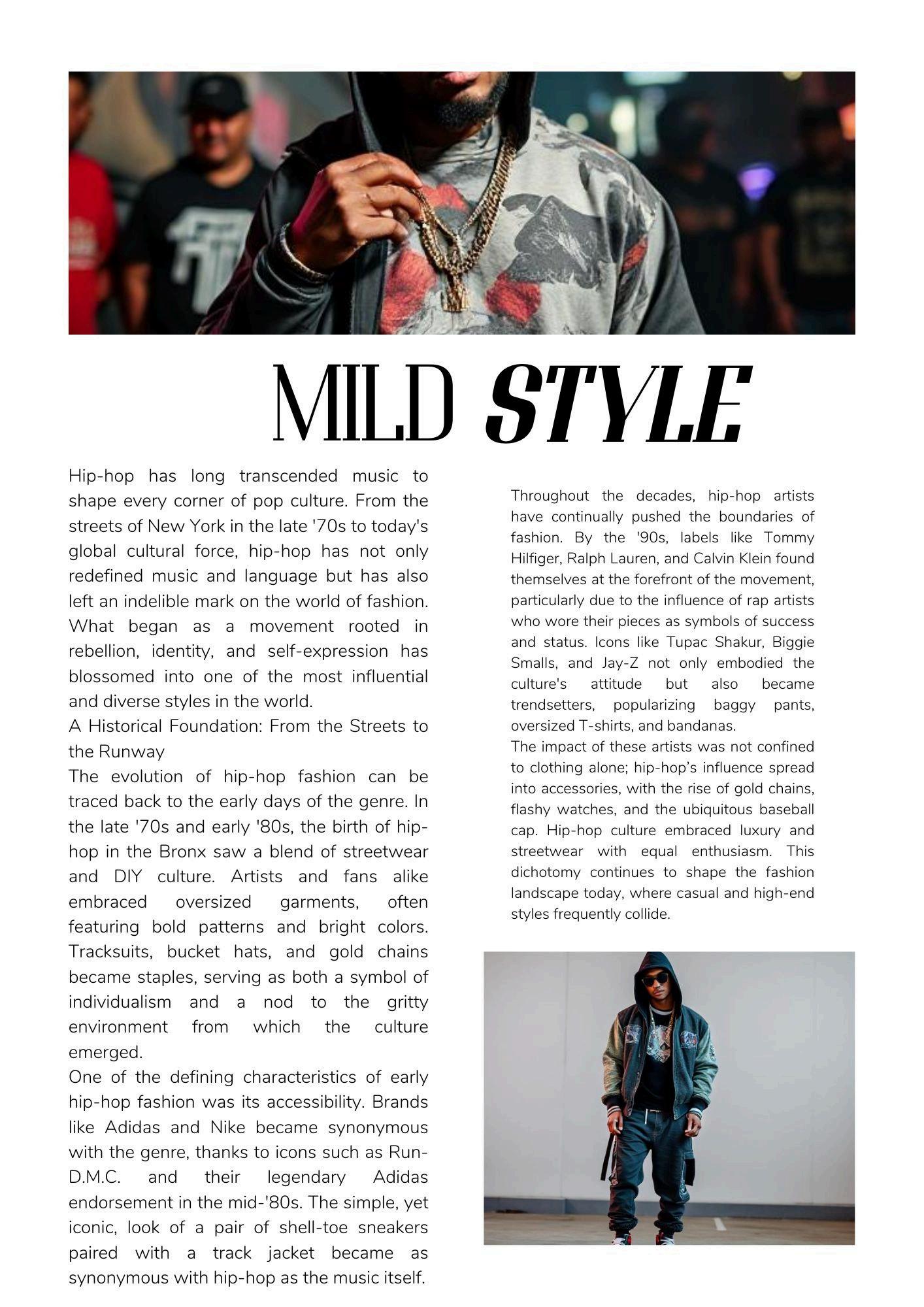
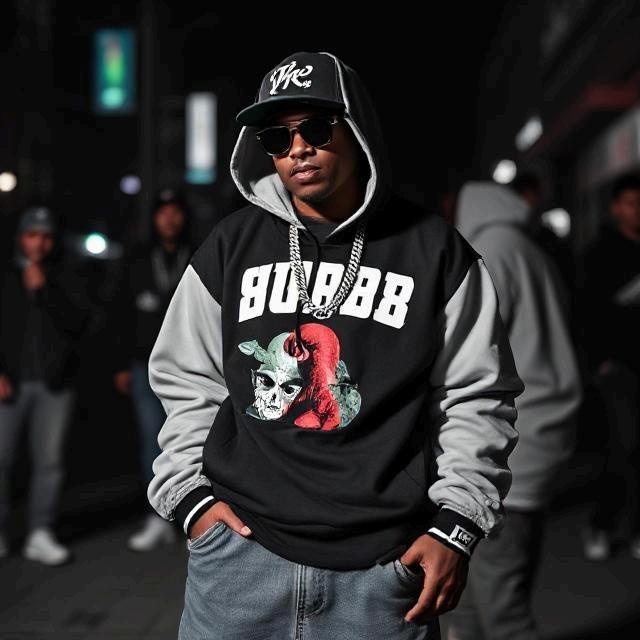
The '90s also marked the rise of streetwear, a movement that seamlessly blended hiphop with skate culture, punk rock, and Japanese aesthetics. Brands like Supreme, Stüssy, and A Bathing Ape (BAPE) tapped into the same rebellious spirit of hip-hop, creating limited-edition items that created a sense of exclusivity while still embracing the everyday look of the streets. Supreme’s collaboration with the Wu-Tang Clan and the rise of BAPE’s signature camo print served as evidence that streetwear was no longer confined to a niche market One of the pivotal figures in this era was Pharrell Williams, whose collaborations with Nigo (the founder of BAPE) helped cement his role not only as a music icon but as a fashion mogul Williams’s style often eclectic, bold, and adventurous echoed the creative spirit of hip-hop, influencing a generation of fans and designers alike
The 2000s and 2010s marked a new chapter in the relationship between hip-hop and high fashion Artists like Kanye West, A$AP Rocky, and Travis Scott blurred the lines between street culture and luxury brands, bringing streetwear into high-fashion realms Kanye’s Yeezy line, with its minimalist aesthetic and emphasis on neutral tones, was a revelation in how hip-hop artists could successfully cross over into the world of high fashion, creating their own global empires Meanwhile, A$AP Rocky’s collaborations with brands like Dior and his unique approach to mixing streetwear with high-end fashion made him one of the most influential figures in the fashion world today. In addition, Travis Scott’s collaboration with Nike and his own Cactus Jack line further cemented hip-hop’s position in the upper echelons of the fashion industry Hip-hop's influence on luxury brands has not gone unnoticed either Major fashion houses like Louis Vuitton, Gucci, and Balenciaga have welcomed collaborations with hip-hop artists, understanding that the genre holds immense cultural power Virgil Abloh, the late designer and founder of OffWhite, was an emblem of this fusion, having worked as the artistic director of Louis Vuitton’s menswear while also being deeply rooted in the culture of hip-hop
Fashion within hip-hop has always been about more than just style it's also a vehicle for social and political expression The powerful symbolism of clothing, hairstyles, and accessories often reflects the broader themes of resistance, empowerment, and identity.
The iconic sagging pants trend, which became a controversial symbol of defiance in the '90s, was not just a style choice but a challenge to authority and societal expectations. More recently, the resurgence of Afrocentric fashion and the embrace of natural hairstyles in hip-hop reflect a celebration of Black culture and pride Artists like J Cole, Kendrick Lamar, and Cardi B use their personal style to speak to issues of race, class, and politics, turning their fashion choices into acts of defiance and solidarity. In this way, hip-hop fashion has become a method of cultural storytelling Just as the music has long provided a narrative for life in marginalized communities, the fashion associated with the genre often tells stories of survival, pride, and triumph
Today, hip-hop's influence on fashion is not confined to the United States With the globalization of hip-hop culture, artists from around the world are making their own marks on the fashion industry The fusion of hip-hop and local cultures has given rise to unique trends in places like the UK, South Korea, and France. In these regions, fashion has taken on new dimensions, incorporating local street styles while still embracing the boldness and attitude central to hip-hop For example, grime artists in the UK have created their own distinctive aesthetic, fusing working-class British style with streetwear Meanwhile, K-pop idols from South Korea, often influenced by hip-hop's global reach, have brought street fashion to the mainstream in Asia, turning it into a global phenomenon

Hip-hop fashion continues to evolve, blending past influences with contemporary innovation. It remains an essential part of the genre's broader cultural significance, providing fans and artists alike with a visual language to express identity, empowerment, and rebellion. Whether it’s the tracksuits and sneakers of the early days or the high- fashion collaborations of today, one thing is clear: hiphop has forever changed the way the world thinks about style From the streets to the runway, hip-hop fashion is here to stay, a dynamic force within pop culture that continues to shape the fashion industry and beyond.

S P E A K S L A M
In a dimly lit café, the energy is palpable
The buzz of conversation fades as the first poet steps up to the mic There’s a rhythm in the air as words slice through the stillness, delivered with force, vulnerability, and passion This is slam poetry, also known as spoken word a genre where the act of speaking is as much an art form as the poem itself It is an arena where voice and body converge to make a statement, where language comes to life, and where words demand not just to be heard, but to be felt At its core, slam poetry is an outlet for self-expression, a platform for those whose voices may not otherwise be amplified Born in the 1980s in Chicago through the efforts of poet Marc Smith, slam poetry quickly evolved from an underground movement into a global phenomenon It encourages poets to engage with their audiences, to evoke deep emotional reactions, and often to take a stand on social, political, or personal issues The thrill of competition the slam itself is only a backdrop to what it’s truly about: the art of performance and the expression of human experience
The beauty of spoken word lies in its accessibility Unlike many traditional forms of poetry that demand scholarly understanding of meter and rhyme, slam poetry invites all to the table It democratizes poetry, removing the barriers of elitism and academic distance Whether performed in front of hundreds in a packed theater or in the intimate setting of a local coffee shop, it allows any voice to rise to the occasion

P E A K S L A M
Slam poetry’s power doesn’t just come from its words; it thrives on the energy of the performance A good poem in this realm isn’t simply recited it’s embodied The poet's delivery hands gesturing, body swaying, eyes locking with the audience becomes a language in itself
The inflection of a single line, the pause that allows the weight of a word to settle, the sharpness of a dramatic gesture all these elements meld together to elevate the message of the poem
The performance aspect, however, is not just about showmanship It’s about communicating raw emotion in a way that resonates with listeners on a personal level A poet might start in a soft, almost whispering voice, and build to a crescendo, shouting, pleading, or laughing The emotional journey they take the audience on mirrors the inner journey the poet undertakes when crafting their verses It’s not just about crafting beautiful words, but about creating an experience that people can connect with
Take, for example, a poem about love lost or a fight for social justice The poet’s body shifts as they tell the story their hands tremble when recounting a heartbreak or slam down as they call for revolution The power of spoken word lies in how it taps into the universal human condition There’s a reason why audiences are often moved to tears or standing in ovation; it’s because the poet is speaking directly to something deeply human
Slam poetry is not just about individual expression it’s a tool for social commentary With the rise of spoken word platforms, poets have turned to slam as a means of addressing pressing societal issues: racial injustice, gender inequality, mental health struggles, and the fight for LGBTQ+ rights These are the voices often silenced in mainstream discourse, and slam poetry has provided a megaphone for their truth
Take for example the work of poets like Sarah Kay, Buddy Wakefield, or the legendary spoken word artist, the late Gil Scott-Heron Their poems aren’t just literary creations; they are calls to action, documents of resilience, and meditations on the state of the world Through vivid imagery and sometimes blunt language, they challenge the audience to rethink societal norms and reflect on their place within it
But slam poetry isn’t just for heavy topics It is also a space for humor, celebration, and joy Lighthearted poems about everyday life or observations on the absurdities of the human condition show that spoken word can be as playful as it is poignant
S P E A K S L A M
One of the most remarkable things about slam poetry is how it transcends barriers In cities across the globe from New York to Paris, from Rio de Janeiro to Nairobi slam poetry communities have sprung up, each with their own unique flavor but sharing the same spirit of openness and expression The beauty of spoken word is in its ability to reach across cultures and connect people through a shared understanding of the power of language In places where silence has been a norm, spoken word offers a revolution It is a reminder that our stories no matter how small or seemingly insignificant matter The poet standing on stage speaks for themselves, but they also speak for everyone who has ever felt the weight of oppression, joy, love, loss, and resilience
As we continue to live in a world brimming with complexities and contradictions, spoken word and slam poetry offer a vital counterpoint Through words, we can make sense of the chaos; through rhythm, we find the pulse of our shared humanity In the end, spoken word is about finding beauty in the world as it is and using language to shape the world as it could be It’s an invitation to speak up, to be heard, and, perhaps most importantly, to listen
